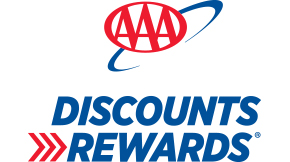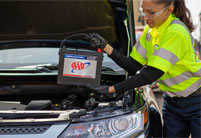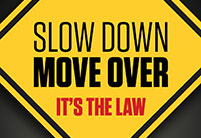Daylight saving ends: Are your headlights bright enough?
Daylight saving ends: Are your headlights bright enough?

You know the routine this time of year: Shorter days, less daylight and longer periods of darkness through the winter. This is also the part of the year where we rely the most on our car's headlights. But are our headlights giving us a clear enough view on dark roads?
The AAA automotive engineering team recently conducted research on halogen headlights — the kind on more than 80% of vehicles on the road today — with surprising results. Examining the illumination provided at low- and high-beam settings, AAA determined that halogen headlights on the low-beam setting are insufficient when driving at highway speeds on roads with no additional overhead lighting.
Simple math bears this out. At 55 mph, a driver requires about 500 feet of roadway to perceive an obstacle, react to it, and bring the car to a complete and safe stop. Yet halogen lights illuminate only 300 feet on low beams, leaving about 200 feet of dark road where obstacles are unseen — with no time for drivers to react. In fact, most low beams only help you stop in time if you’re driving no faster than 35 mph.
Late model vehicles with newer high-intensity discharge (HID) lights illuminate up to 400 feet; and light-emitting diode (LED) lights only illuminate up to 450 feet. But even these newer models are lacking.
What can drivers do now? Thankfully, most highways are dotted with lights to make up for the headlight shortfall. If overhead lights are not present, using high beams can improve sight distances by an average of 28%. Drivers should get in a habit of using their vehicle’s high beams, making sure to dim them in the presence of other drivers.
AAA continues to research this issue. The automotive engineering group recently studied Adaptive Driving Beam (ADB) headlights, which are currently used in Europe and Canada, but are illegal in the U.S. ADB headlights — also called smart headlights — shine as brightly as traditional lights that have high beams, but come with new technology that prevents glare from shining into oncoming vehicles.
Another big problem with headlights is visibility. Pitted, yellow and hazy lights significantly reduce output, and can scatter light instead of focusing it on the roadway. A basic headlight restoration kit — available at auto supply stores — doubles the light intensity and reduces light scattering. For more damaged lights, a AAA Approved Auto Repair facility can do more aggressive restoration or even replace them if necessary.
Drive like a pro in any weather during any time of year with driver training from AAA. Whatever you need to learn behind the wheel, AAA has the course for you.










